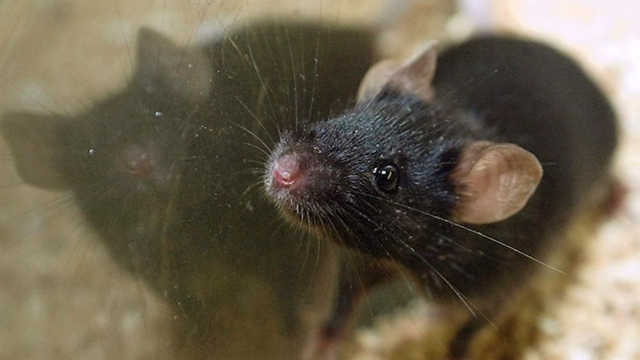A brain receptor regulates stress responses differently in male and female mice and, it turns out, eating gets affected. In females, Israeli scientists at Weizmann discovered.

A receptor related to stress turns out to be related to eating - in female mice. Credit: Reuters
Studying a protein in the brain that is related to stress may have led to insight on why women are more prone than men to eating disorders.
Granted, the findings at the Weizmann Institute of Science were made on mice, among whom anorexia isn't usually a problem. But the serendipitous discovery may well apply to all mammals.
When we're stressed, cells in our hypothalamus (the brain part that connects the nervous system to the hormone system) step up the production of a receptor called CRFR.
Receptors are specialized proteins that "receive" biochemical signals, which means that the signal molecule sticks to them, and causes an effect. The hypothalamus is also involved in feelings of hunger and satiety.
In this case, after being exposed to stress chemicals, the CRFR receptor helps to quickly activate the stress-response nervous system. For instance, it causes the heart to beat faster, preparing the mouse or man to fight or flee.
The thing is, the hypothalamus is also related to regulation of metabolism - the exchange of materials in the body. The Israeli team wondered if CRFR might be involved here too. It was, as the team reported in the latest edition of Cell Metabolism.
Lady mice feel it more
Dr. Yael Kuperman began this study as part of her doctoral research in the lab of Prof. Alon Chen of the Neurobiology Department, Weizmann says. The group looked to see where in the hypothalamus the CRFR receptor exists, and got a surprise.
They found the receptor exists in about half the cells involved in arousing appetite and suppressing energy consumption. “This was a bit of a surprise,” says Kuperman, “as we would instinctively expect the receptor to be expressed on the cells that suppress hunger.”
Curious, the researchers removed the CRFR receptor from the cells that arouse appetite in the hypothalamus. (Again we note the study was done in mice.)

The eating habits of the male lab mouse turn out to be less affected by stress hormones than the female's. Credit: AP
Under normal conditions, they saw no result at all, confirming that the CRFR receptor kicks in during stressful situations. But when they exposed the mice to stressors (cold or hunger, not cats), there was another surprise. The effects were only expressed in females.
When mice are cold, their nervous systems activate a special brown fat that breaks down to produce heat, maintaining the murine's body temperature. When the CRFR receptor was removed, the body temperature dropped dramatically – but only in the lady mice. It hadn't much effect on the males.
Fasting produced a similarly disparate response: hungry female mice in whom CRFR had been suppressed suffered from a plunge in liver glucose. Not the males.
Male and female bodies may differ greatly in metabolic responses to stress, they conclude – and the fact that the receptor suppresses hunger in stressed females, but not males, may help explain why women are statistically much more prone to eating disorders than men. Ta da.
